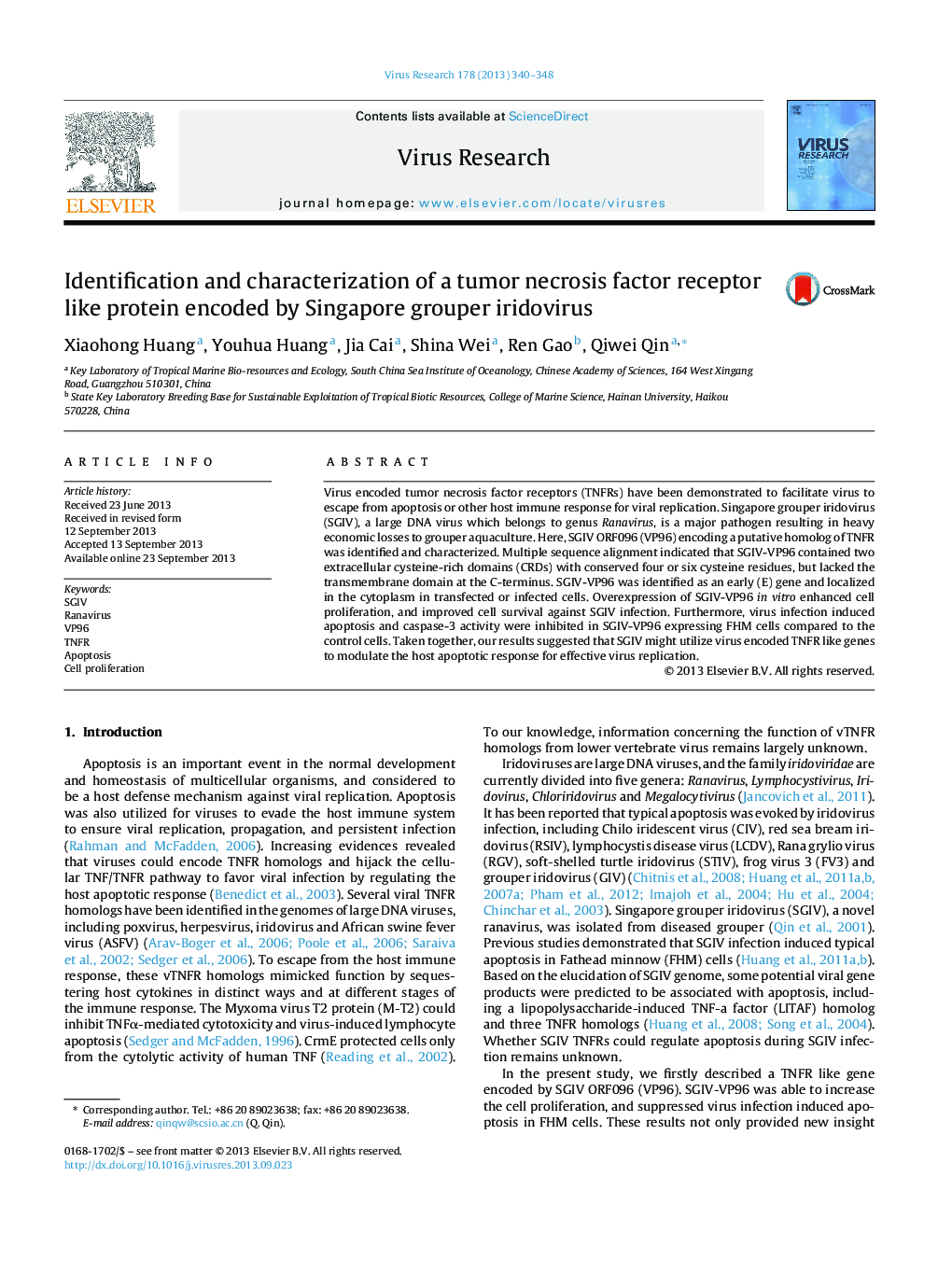| Article ID | Journal | Published Year | Pages | File Type |
|---|---|---|---|---|
| 6142683 | Virus Research | 2013 | 9 Pages |
â¢SGIV VP96 encoded a putative homolog of TNFR and contained two CRDs.â¢SGIV-VP96 was identified as an early (E) gene and localized in the cytoplasm.â¢Overexpression of SGIV-VP96 in vitro enhanced cell proliferation, and improved cell survival against SGIV infection.â¢Overexpression of SGIV-VP96 inhibited virus infection induced apoptosis and caspase-3 activation.
Virus encoded tumor necrosis factor receptors (TNFRs) have been demonstrated to facilitate virus to escape from apoptosis or other host immune response for viral replication. Singapore grouper iridovirus (SGIV), a large DNA virus which belongs to genus Ranavirus, is a major pathogen resulting in heavy economic losses to grouper aquaculture. Here, SGIV ORF096 (VP96) encoding a putative homolog of TNFR was identified and characterized. Multiple sequence alignment indicated that SGIV-VP96 contained two extracellular cysteine-rich domains (CRDs) with conserved four or six cysteine residues, but lacked the transmembrane domain at the C-terminus. SGIV-VP96 was identified as an early (E) gene and localized in the cytoplasm in transfected or infected cells. Overexpression of SGIV-VP96 in vitro enhanced cell proliferation, and improved cell survival against SGIV infection. Furthermore, virus infection induced apoptosis and caspase-3 activity were inhibited in SGIV-VP96 expressing FHM cells compared to the control cells. Taken together, our results suggested that SGIV might utilize virus encoded TNFR like genes to modulate the host apoptotic response for effective virus replication.
